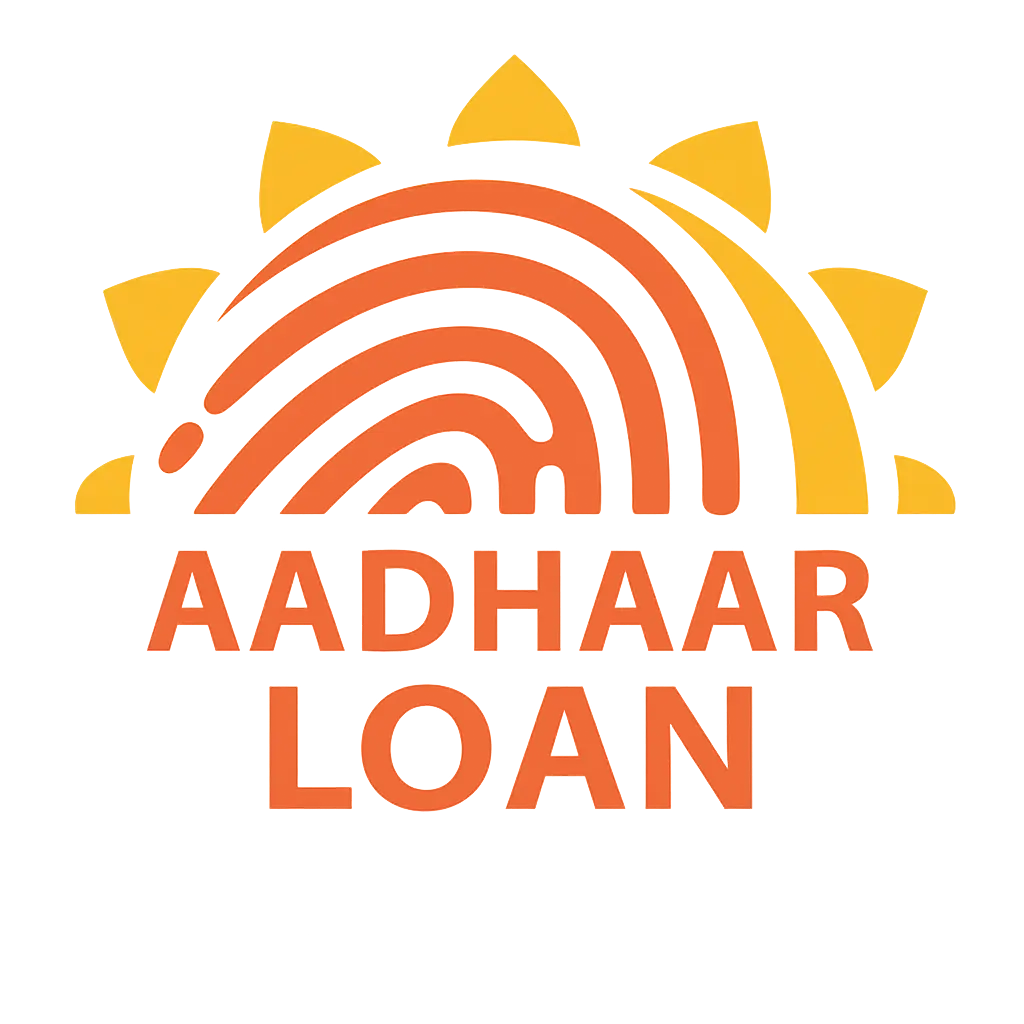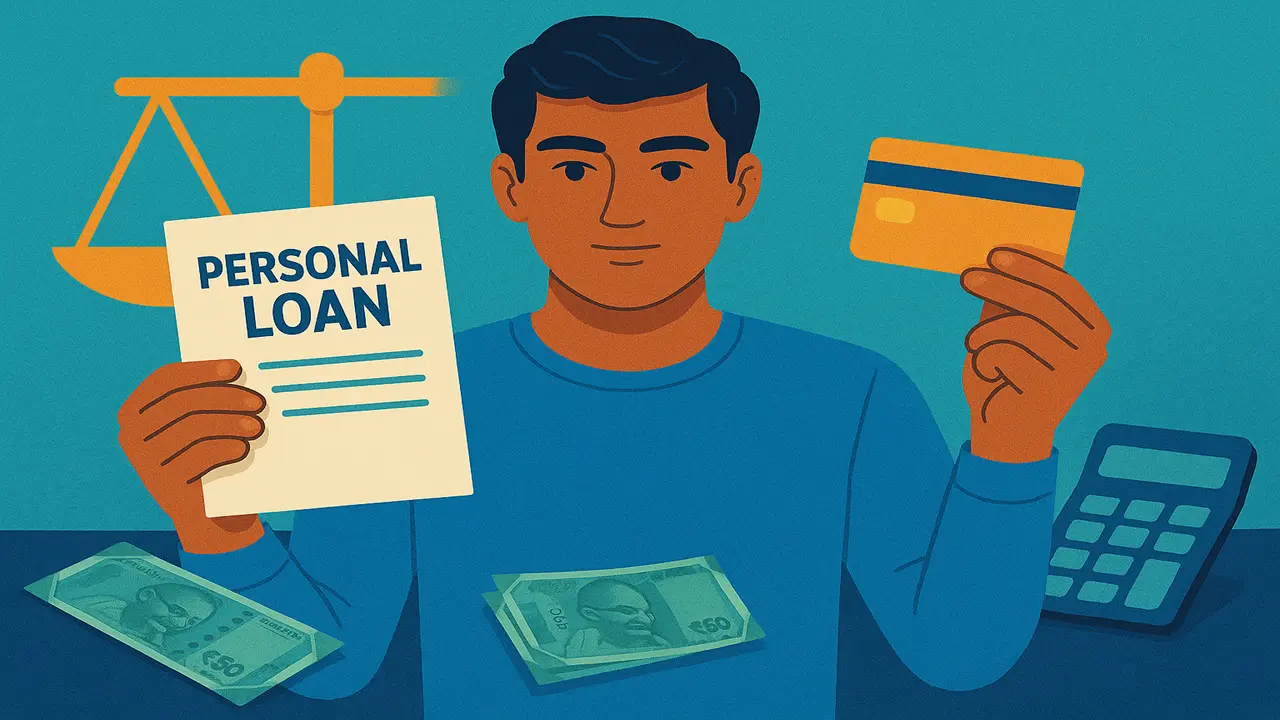Borrowing money is sometimes necessary to meet financial needs, but choosing the right loan type is crucial. Personal loans and credit card loans are two common options for salaried employees and self-employed individuals alike. Each has unique features, costs, and benefits that suit different situations. This guide compares personal loans and credit card loans to help you decide which is better for your financial goals.
What Is a Personal Loan?
A personal loan is a fixed amount borrowed from a bank or financial institution, repaid in monthly installments (EMIs) over a set period. It’s typically unsecured, meaning no collateral is required. In India, personal loans are used for expenses like weddings, medical emergencies, or home renovations. They offer predictable payments and clear repayment terms.
Business Loan
Get personal loan up to 5 CR
Home Loan
Get home loan up to 50 lakhs
These loans are approved based on your income, credit score, and repayment capacity. For example, a ₹5 lakh loan at 12% interest over 5 years has fixed EMIs. Personal loans provide structure and clarity. They’re ideal for planned, large expenses.
What Is a Credit Card Loan?
A credit card loan is a pre-approved loan offered against your credit card’s available limit. It allows you to borrow funds without additional approval, repaid in EMIs or as part of your card balance. For instance, you might borrow ₹50,000 from a ₹2 lakh credit limit. It’s a convenient option for quick cash needs.
Unlike personal loans, credit card loans are tied to your card’s terms. They often have higher interest rates and flexible repayment options. This makes them suitable for smaller, urgent expenses. However, mismanagement can lead to high costs.
Key Differences Between Personal Loans and Credit Card Loans
Understanding the differences between these loans helps you choose wisely. Personal loans offer larger amounts, typically ₹1 lakh to ₹50 lakh, depending on eligibility. Credit card loans are usually smaller, limited to your card’s available credit. This makes personal loans better for big expenses.
Interest rates also vary significantly. Personal loans generally have lower rates, ranging from 10-20% annually. Credit card loans often carry higher rates, sometimes 30-40% if not repaid quickly. Lower rates make personal loans more cost-effective for long-term borrowing.

Aadhar Pe Loan
Get aadhar loan up to 1 lakhs
Personal Loan
Get personal loan up to 5 lakhs
Repayment terms differ as well. Personal loans have fixed tenures, like 1-5 years, with consistent EMIs. Credit card loans offer flexible repayment, but unpaid balances accrue high interest. Fixed terms provide predictability, while flexibility suits short-term needs.
Pros and Cons of Personal Loans
Personal loans have several advantages. They offer large loan amounts with lower interest rates compared to credit card loans. The fixed repayment schedule makes budgeting easier. For example, a ₹3 lakh loan at 12% over 3 years has predictable EMIs.
However, personal loans require a formal application process, including documentation and credit checks. Approval can take days, making them less suitable for urgent needs. They also demand a good credit score for favorable terms. Understanding these pros and cons helps you decide.
Pros and Cons of Credit Card Loans
Credit card loans are quick and convenient. They require no separate approval, as funds are drawn from your existing credit limit. For instance, borrowing ₹20,000 for an emergency is instant if your card allows it. This makes them ideal for unexpected expenses.
On the downside, credit card loans often have high interest rates. Unpaid balances can spiral into costly debt if not managed. They’re also limited by your credit card’s available limit. These factors make them less suitable for large or long-term borrowing.
When to Choose a Personal Loan
Personal loans are better for planned, large expenses. For example, funding a wedding or consolidating debt benefits from lower interest rates and fixed EMIs. They’re also ideal when you need a substantial amount, like ₹5 lakh for home repairs. The structured repayment suits long-term financial planning.
They work best if you have a good credit score. A score above 750 ensures better rates and approval chances. Personal loans are also suitable for those who prefer predictable payments. Choose them when cost and structure are priorities.
When to Choose a Credit Card Loan
Credit card loans suit urgent, smaller expenses. For instance, borrowing ₹30,000 for a medical bill or appliance repair is quick and hassle-free. They’re ideal when you need funds instantly without paperwork. Flexibility in repayment is another advantage for short-term needs.
They’re also useful if you can repay quickly to avoid high interest. For example, paying off a ₹20,000 loan within a few months minimizes costs. Credit card loans are best for those with disciplined repayment habits. Choose them for convenience and speed.
Factors to Consider Before Choosing
Before deciding, assess your financial situation. Consider the loan amount needed—personal loans are better for larger sums, while credit card loans suit smaller ones. Evaluate your repayment capacity to ensure EMIs or balances fit your budget. This prevents financial strain.
Check interest rates and total cost. A personal loan at 12% is cheaper than a credit card loan at 36% for the same amount. Also, consider your credit score, as it affects personal loan approval and rates. These factors guide your decision.
Common Mistakes to Avoid
Borrowing without a plan can lead to trouble. Taking a personal loan without comparing rates from multiple banks increases costs. Always research lenders for the best terms. This saves money over the loan’s tenure.
Using a credit card loan for non-urgent expenses is another error. High interest rates make it costly for long-term borrowing. Only use it for emergencies and repay quickly. Avoiding these mistakes ensures smart borrowing.
Tools to Help You Decide
Technology simplifies loan comparisons. Online platforms like BankBazaar compare personal loan rates from multiple lenders. They show interest rates, EMIs, and eligibility criteria. This helps you find the best deal.
Credit card apps often display loan offers and terms. Check your card’s app for pre-approved loan details. Online EMI calculators also estimate monthly payments for both loan types. These tools make decision-making easier and more informed.
Tips for Smart Borrowing
Regardless of the loan type, borrow only what you need. For example, don’t take a ₹5 lakh personal loan if ₹2 lakh suffices. This keeps repayments manageable. Always factor in interest costs when planning.
Maintain a good credit score to access better loan terms. Pay bills on time and keep credit card balances low. Create a budget to ensure timely repayments. Smart borrowing protects your financial health.
Conclusion
Choosing between a personal loan and a credit card loan depends on your needs and financial situation. Personal loans are ideal for large, planned expenses with lower interest rates and fixed terms. Credit card loans suit urgent, smaller needs with quick access but higher costs. By assessing your needs, comparing costs, and borrowing wisely, you can make the best choice for your finances.
FAQs
1. What is the main difference between a personal loan and a credit card loan?
A personal loan offers a fixed amount with lower interest rates and set EMIs. A credit card loan uses your card’s limit with higher rates and flexible repayment.
2. When should I choose a personal loan?
Choose a personal loan for large, planned expenses like weddings or debt consolidation. It’s best for those needing lower rates and fixed payments.
3. Are credit card loans a good option for emergencies?
Yes, credit card loans are quick and convenient for small, urgent expenses. Repay them quickly to avoid high interest costs.
4. How can I decide which loan is better for me?
Compare interest rates, loan amounts, and repayment terms. Assess your budget and credit score to choose the most affordable option.
5. Can I improve my chances of getting a personal loan?
Maintain a good credit score by paying bills on time. Compare lenders for better rates and provide accurate documentation.
